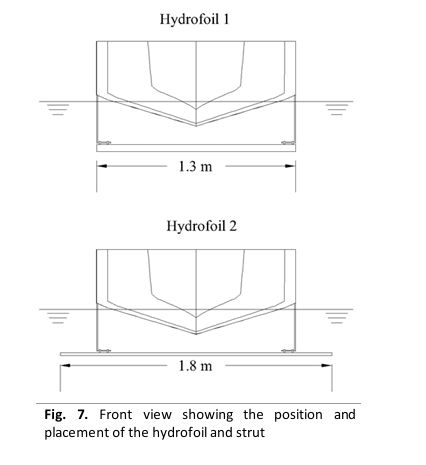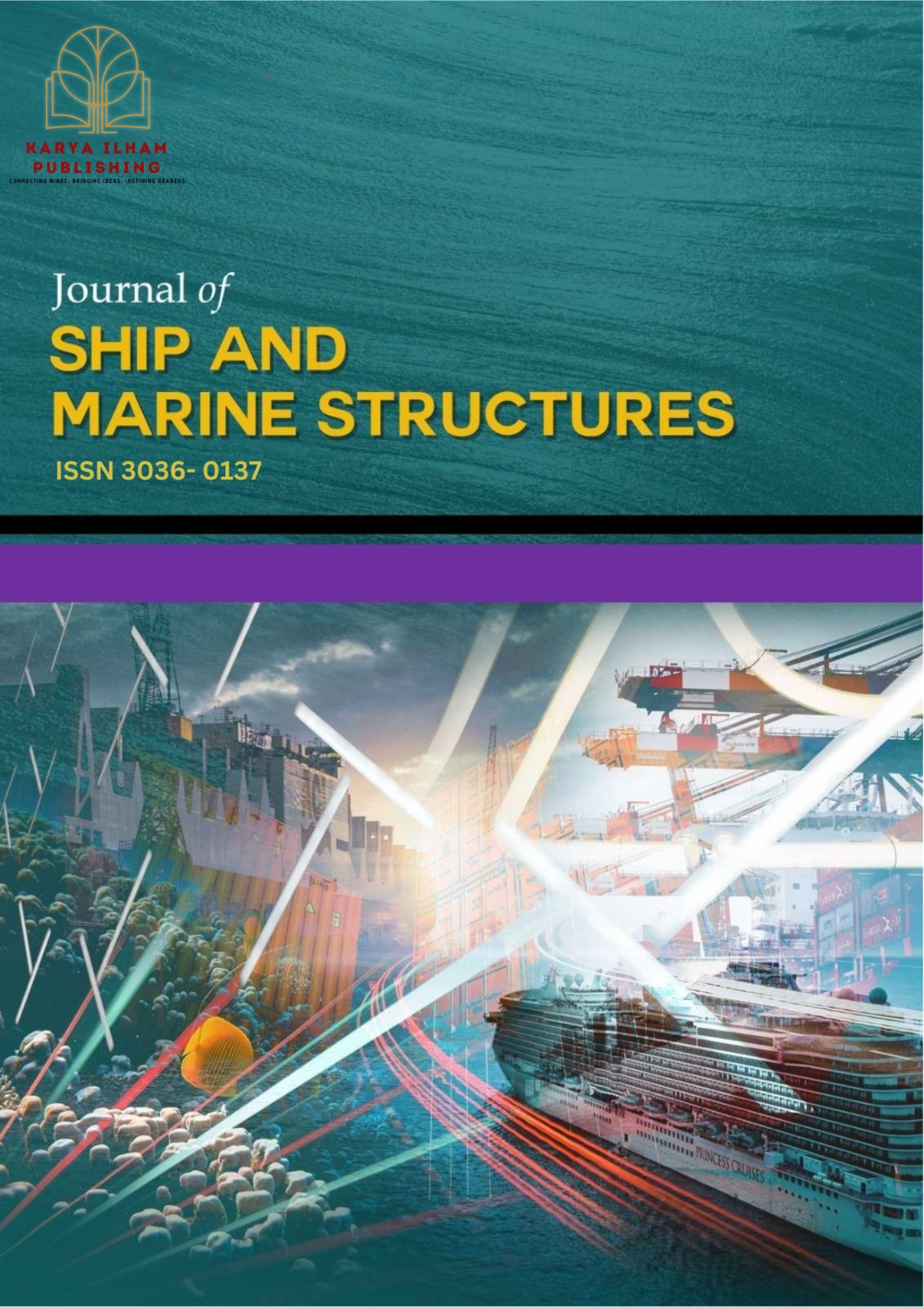Experimental Study on the Effect of Hydrofoil Aspect Ratio on Fishing Boat Speed
DOI:
https://doi.org/10.37934/jsms.9.1.2337Keywords:
Fishing boat, velocity, hydrofoil, aspect ratioAbstract
Fishing boats operate at specific velocities on the water's surface, where the water's density creates friction between the boat's hull and the water, resulting in resistance that hinders forward motion. This resistance leads to a decrease in boat velocity, making time usage inefficient. This research aims to investigate a device in the form of a hydrofoil that can enhance fishing boat velocity while reducing fuel consumption. The hydrofoil approach to increase the boat velocity is by decreasing the hull's wetted surface area, thereby reducing the frictional resistance with the water. Applying hydrofoils to generate lift on the hull has been shown to reduce boat resistance. This study was conducted in calm water, exploring the effect of varying hydrofoil aspect ratios on boat velocity. The results indicate that a hydrofoil with an aspect ratio of 9 produced a boat velocity of 10.5 knots, while an aspect ratio of 3.25 resulted in 9.9 knots. A higher hydrofoil aspect ratio reduces the pressure on the bottom surface and increases velocity on the top surface, leading to improved performance. Therefore, Hydrofoil 2, with a higher aspect ratio, outperformed Hydrofoil 1, which had a lower aspect ratio.














